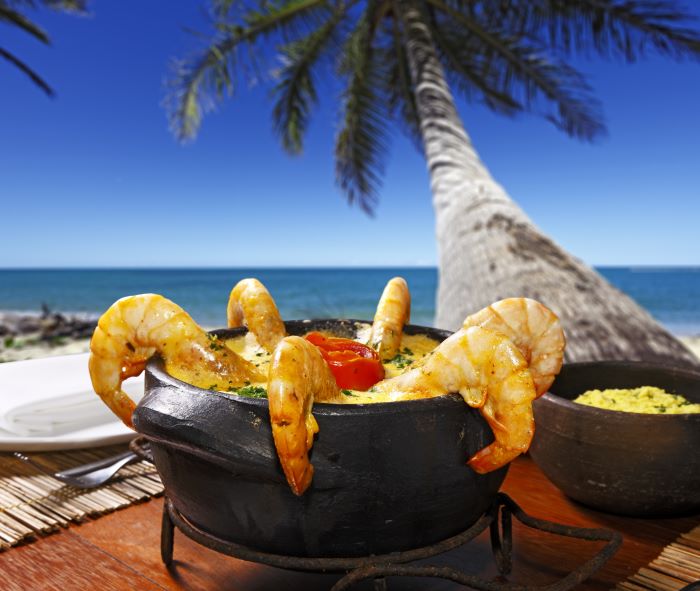Highly Processed Foods Could Be Addictive As Tobacco, Study Says
You might have heard the notion that processed foods are unhealthy, but that should
You might have heard the notion that processed foods are unhealthy, but that should
Often skin cancer is associated with exposure to ultraviolet light, but it turns out

Although most parents are concerned about the impact video games can have on their

A new research has shown that sleeping for less than five hours per night

A new study has established that strict parenting can lead to depression in children.
A new study has found that smoking cigarettes can block oestrogen production in women’s
Humans often sleep because they get to sleep, according to sleep researcher William Dement.
You may have heard that eating a balanced diet can reduce the risk for
According to new research, having dinner regularly as a family could be the key
According to the latest research, practicing mind relaxation techniques such as medication in older
Maintaining a healthy lifestyle is sometimes challenging, particularly if you’re constantly exposed to unhealthy

Exercise has numerous advantageous health effects in addition to aiding in weight loss or
The South Beach Diet, named after a posh Miami neighbourhood, is frequently referred to as a modified low-carbohydrate diet. The South Beach Diet has less carbs and more protein and healthful unsaturated fats than the average diet.
Seniors are reducing their waistlines this Holiday Season with the low-carb South Beach Diet.
A South Beach keto (ketogenic) diet variant is also well known. Ketogenic diets have relatively low carbohydrates. The objective of a ketogenic diet is to drive the body to utilize fat as its primary source of energy, as opposed to carbs or protein. Seniors, however, may find this to be too taxing on their systems and are advised to adhere to the usual South Beach diet.
The South Beach’s Diet goal is to induce weight reduction and a healthy lifestyle by modifying your overall daily food composition. According to the South Beach Diet, it is a healthy way of eating regardless of your weight loss goals. Nevertheless, no diet alone will help you achieve a beautiful waistline; exercise and healthy food are both essential for success. Keep on reading to compare more benefits of this acclaimed diet, ideal for Seniors.
The South Beach Diet, named after a posh Miami neighbourhood, is frequently referred to as a modified low-carbohydrate diet. The South Beach Diet has less carbs and more protein and healthful unsaturated fats than the average diet.
Seniors are reducing their waistlines this Holiday Season with the low-carb South Beach Diet.
A South Beach keto (ketogenic) diet variant is also well known. Ketogenic diets have relatively low carbohydrates. The objective of a ketogenic diet is to drive the body to utilize fat as its primary source of energy, as opposed to carbs or protein. Seniors, however, may find this to be too taxing on their systems and are advised to adhere to the usual South Beach diet.
The South Beach’s Diet goal is to induce weight reduction and a healthy lifestyle by modifying your overall daily food composition. According to the South Beach Diet, it is a healthy way of eating regardless of your weight loss goals. Nevertheless, no diet alone will help you achieve a beautiful waistline; exercise and healthy food are both essential for success. Keep on reading to compare more benefits of this acclaimed diet, ideal for Seniors.

The South Beach Diet maintains that its combination of complex carbohydrates, lean protein and healthy fats makes it a nutrient-dense, fiber-rich diet that you can follow for a lifetime of good eating. Food sources of complex carbohydrates, or so-called healthy carbs, include fruit, vegetables, whole grains, beans and legumes. Simple carbohydrates, or “bad” carbs, include sugar, syrup and baked products derived from refined white flour.
The low-carb diet also educates you about the various types of dietary fats and advises you to minimize bad fats while eating more foods with beneficial monounsaturated fats. The South Beach Diet stresses the advantages of fiber and whole grains and urges you to incorporate fruits and vegetables in your eating plan. Thanks to these key changes in eating habits, Seniors may add years onto their life, feel more energized and maintain a waistline they can be proud of.
The South Beach Diet has less carbs than a standard diet but is not as extreme as a pure low-carb diet. Approximately 45 to 65 percent of the calories in a normal diet come from carbs. This corresponds to 225 to 325 grams of carbs per day, based on a 2,000-calorie-per-day diet.
In the last maintenance phase of the South Beach Diet, you may consume up to 28% of your daily calories, or around 140 grams of carbs, from carbohydrates. In contrast, a stringent low-carb diet may limit your daily carbohydrate consumption to 20 to 100 grams. The South Beach Diet has developed through time and now emphasizes exercise as an essential component of a healthy lifestyle. According to South Beach Diet research, frequent exercise increases your metabolism and prevents weight gain fluctuations.
Phase 1
• This two-week phase is aimed to decrease cravings for high-sugar and refined carbohydrate meals in order to jump-start weight reduction. You eliminate practically all carbs, including pasta, rice, bread,
and fruit, from your diet. You cannot consume fruit juice or alcohol. You concentrate on consuming lean protein sources such as shellfish, skinless chicken, lean beef, and soy products. You may also
consume veggies rich in fiber, low-fat dairy products, and meals containing healthy, unsaturated fats, such as avocados, nuts, and seeds.
Phase 2
• This is a long-term phase of weight reduction. You gradually reintroduce some of the items that were forbidden in phase 1, such as whole-grain breads, whole-wheat pasta, brown rice, fruits, and more
vegetables. This phase continues until you attain your target weight.
Phase 3
• This is the maintenance phase, which is intended to be a healthy way of eating for life. You adhere to the lifestyle tenets you acquired in the previous two periods. All foods may be consumed in
moderation.
Here’s what you might eat during a typical day on phase 1 of the South Beach Diet:
Breakfast
• For breakfast, you might have a free range omelet with smoked salmon or poached eggs with spinach and ham, along with a steaming cup of coffee or tea.
Lunch.
• For lunch, why not try a salad with lightly toasted scallops or tiger shrimp and iced tea or sparkling water.
Dinner
• Tuna steak or pork chop may be grilled for dinner and served with grilled vegetables and a salad.
Dessert
• Lucky you, even in phase 1, the diet says you can have a dessert like a ricotta cheesecake or a chilled espresso custard.
Snacks
• Seniors can also dine on healthy snacks like a cheese and turkey roll-up or roasted chickpeas during the day.
| Cookie | Duration | Description |
|---|---|---|
| cookielawinfo-checbox-analytics | 11 months | This cookie is set by GDPR Cookie Consent plugin. The cookie is used to store the user consent for the cookies in the category "Analytics". |
| cookielawinfo-checbox-functional | 11 months | The cookie is set by GDPR cookie consent to record the user consent for the cookies in the category "Functional". |
| cookielawinfo-checbox-others | 11 months | This cookie is set by GDPR Cookie Consent plugin. The cookie is used to store the user consent for the cookies in the category "Other. |
| cookielawinfo-checkbox-advertisement | 1 year | The cookie is set by GDPR cookie consent to record the user consent for the cookies in the category "Advertisement". |
| cookielawinfo-checkbox-necessary | 11 months | This cookie is set by GDPR Cookie Consent plugin. The cookies is used to store the user consent for the cookies in the category "Necessary". |
| cookielawinfo-checkbox-performance | 11 months | This cookie is set by GDPR Cookie Consent plugin. The cookie is used to store the user consent for the cookies in the category "Performance". |
| crumb | This cookie is set by websites that uses SquareSpace platform. The cookie is used to prevent cross-site request forgery (CSRF). | |
| elementor | never | This cookie is used by the website's WordPress theme. It allows the website owner to implement or change the website's content in real-time. |
| gdpr_status | 6 months 2 days | This cookie is set by the provider Media.net. This cookie is used to check the status whether the user has accepted the cookie consent box. It also helps in not showing the cookie consent box upon re-entry to the website. |
| viewed_cookie_policy | 11 months | The cookie is set by the GDPR Cookie Consent plugin and is used to store whether or not user has consented to the use of cookies. It does not store any personal data. |
| XSRF-TOKEN | session | The cookie is set by Wix website building platform on Wix website. The cookie is used for security purposes. |
| Cookie | Duration | Description |
|---|---|---|
| __gads | 1 year 24 days | This cookie is set by Google and stored under the name dounleclick.com. This cookie is used to track how many times users see a particular advert which helps in measuring the success of the campaign and calculate the revenue generated by the campaign. These cookies can only be read from the domain that it is set on so it will not track any data while browsing through another sites. |
| _ga | 2 years | This cookie is installed by Google Analytics. The cookie is used to calculate visitor, session, campaign data and keep track of site usage for the site's analytics report. The cookies store information anonymously and assign a randomly generated number to identify unique visitors. |
| _ga_XZV5DHF9VD | 2 years | This cookie is installed by Google Analytics. |
| _gat_gtag_UA_71463705_9 | 1 minute | This cookie is set by Google and is used to distinguish users. |
| _gat_UA-71463705-9 | 1 minute | This is a pattern type cookie set by Google Analytics, where the pattern element on the name contains the unique identity number of the account or website it relates to. It appears to be a variation of the _gat cookie which is used to limit the amount of data recorded by Google on high traffic volume websites. |
| _gcl_au | 3 months | This cookie is used by Google Analytics to understand user interaction with the website. |
| _gid | 1 day | This cookie is installed by Google Analytics. The cookie is used to store information of how visitors use a website and helps in creating an analytics report of how the website is doing. The data collected including the number visitors, the source where they have come from, and the pages visted in an anonymous form. |
| CONSENT | 16 years 5 months 20 days 12 hours | These cookies are set via embedded youtube-videos. They register anonymous statistical data on for example how many times the video is displayed and what settings are used for playback.No sensitive data is collected unless you log in to your google account, in that case your choices are linked with your account, for example if you click “like” on a video. |
| session_depth | 30 minutes | This cookie is used to store the number of pages a vistor visits in a session on the website. |
| Cookie | Duration | Description |
|---|---|---|
| _fbp | 3 months | This cookie is set by Facebook to deliver advertisement when they are on Facebook or a digital platform powered by Facebook advertising after visiting this website. |
| B | 1 year | This Cookie is used by Yahoo to provide ads, contents or analytics. |
| DSID | 1 hour | This cookie is setup by doubleclick.net. This cookie is used by Google to make advertising more engaging to users and are stored under doubleclick.net. It contains an encrypted unique ID. |
| fr | 3 months | The cookie is set by Facebook to show relevant advertisments to the users and measure and improve the advertisements. The cookie also tracks the behavior of the user across the web on sites that have Facebook pixel or Facebook social plugin. |
| id | 1 year | The main purpose of this cookie is targeting and advertising. It is used to create a profile of the user's interest and to show relevant ads on their site. This Cookie is set by DoubleClick which is owned by Google. |
| IDE | 1 year 24 days | Used by Google DoubleClick and stores information about how the user uses the website and any other advertisement before visiting the website. This is used to present users with ads that are relevant to them according to the user profile. |
| test_cookie | 15 minutes | This cookie is set by doubleclick.net. The purpose of the cookie is to determine if the user's browser supports cookies. |
| uuid2 | 3 months | This cookies is set by AppNexus. The cookies stores information that helps in distinguishing between devices and browsers. This information us used to select advertisements served by the platform and assess the performance of the advertisement and attribute payment for those advertisements. |
| VISITOR_INFO1_LIVE | 5 months 27 days | This cookie is set by Youtube. Used to track the information of the embedded YouTube videos on a website. |
| YSC | session | This cookies is set by Youtube and is used to track the views of embedded videos. |
| Cookie | Duration | Description |
|---|---|---|
| __ib2pgses_1186_a | session | No description |
| __ib2pgses_1198_a | session | No description |
| __ib2pgses_1221_a | session | No description |
| __ib2pgses_1253_a | session | No description |
| __ib2pgses_1283_a | session | No description |
| __ib2pgses_1476_a | session | No description |
| __ib2vid | 1 month | No description available. |
| _app_session | 1 month | No description available. |
| _gfpc | session | No description available. |
| A3 | 1 year | No description |
| akacd_widgets_routing | past | No description available. |
| ans3 | 2 days | No description |
| check | 1 day | No description available. |
| GoogleAdServingTest | session | No description |
| L-y13n2 | 1 day | No description |
| outbrain_cid_fetch | 5 minutes | No description available. |
| owner_token | 1 day | No description available. |
| PP-y13n2 | 1 hour | No description |
| r | 7 days | No description |
| recs_3e571bd1fd579a0c57cc16aa155ba54b | past | No description |
| RL-y13n2 | 1 day | No description |
| thirdparty | 1 hour | No description available. |
| yt-remote-connected-devices | never | No description available. |
| yt-remote-device-id | never | No description available. |